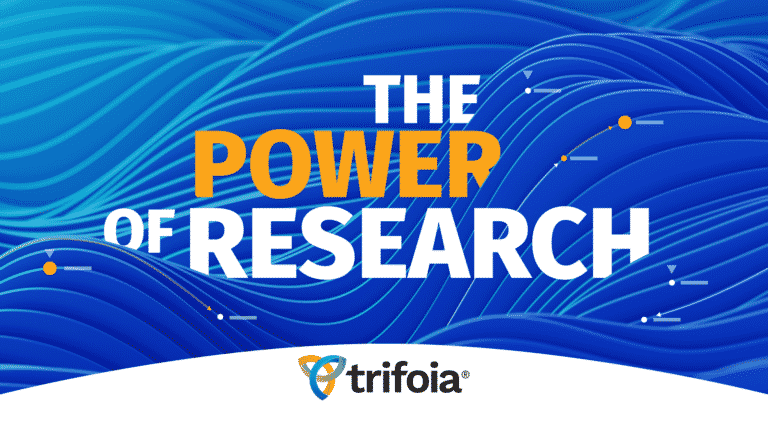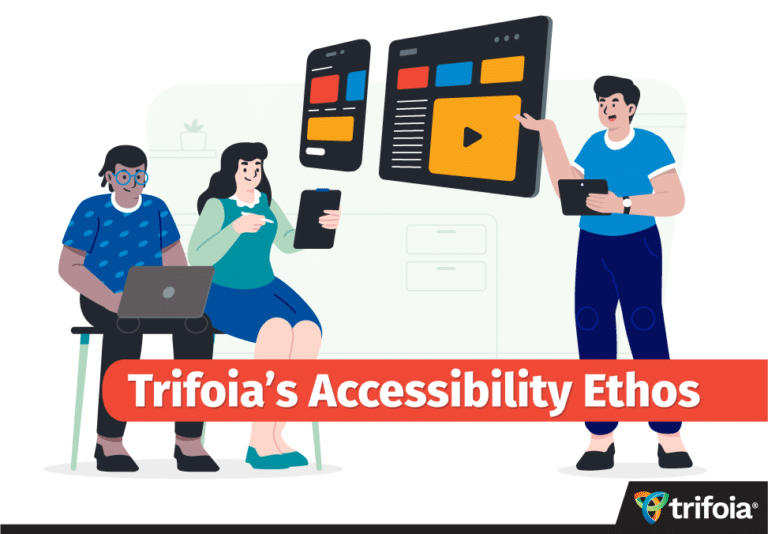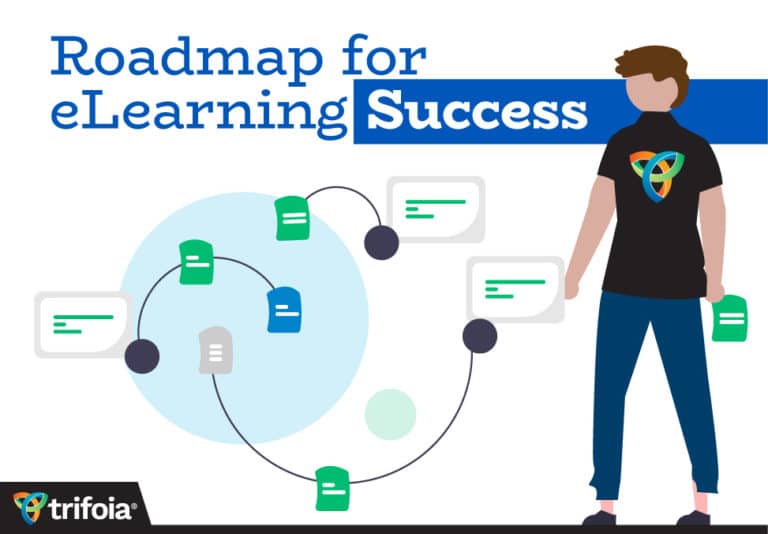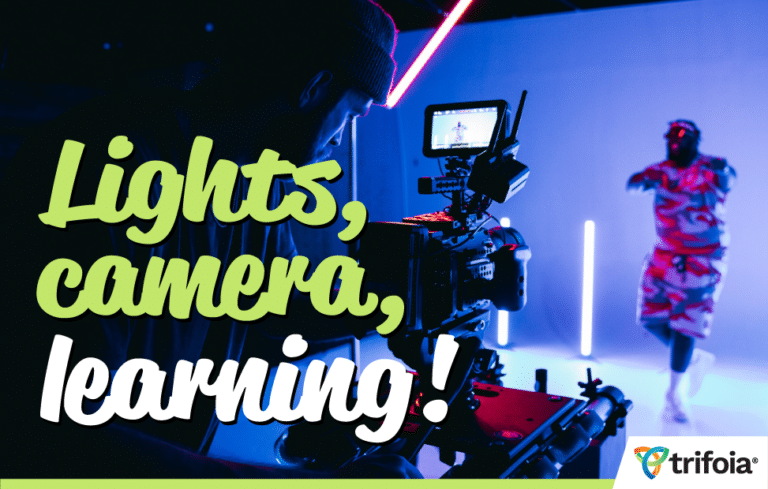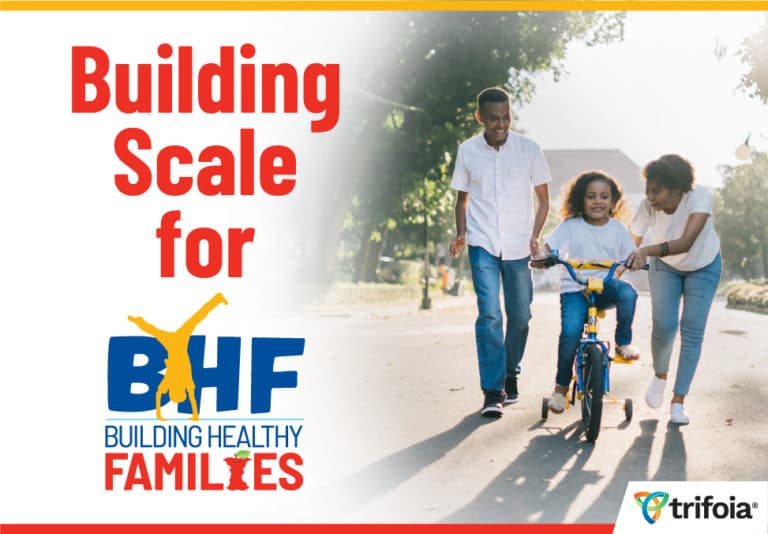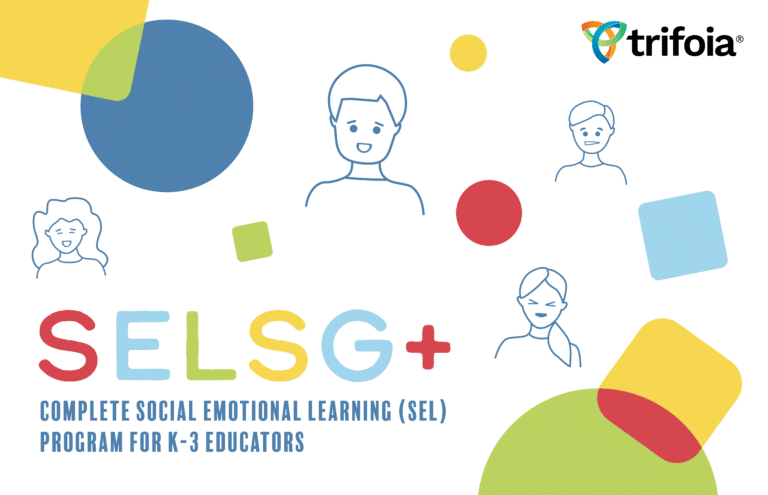Making learning more accessible has always been at the heart of Trifoia’s work, dating back to its founding as IRIS Educational Media over two decades ago. Our earliest projects helped expand options for people with developmental disabilities, provided teachers with tools to defuse student conflicts, and made skill development more accessible to populations from family child care providers to Spanish-speaking families.
But a lot has changed since those first products planted Trifoia’s flag in the eLearning space. While accessibility once meant merely getting an eLearning product in users’ hands, the internet’s rapid evolution has spurred a massive shift in how we view accessibility online.
At its most basic, web accessibility is the design of websites and online tools to enable their use by people who experience disabilities. Websites, apps, and other tools can be expertly programmed and include cutting-edge technologies. But if they aren’t designed with a full range of possible users in mind, the end result will be a product that creates as many barriers as solutions.
So for Trifoia, an organization built on developing media-rich learning solutions, conforming to the highest digital accessibility standards is an essential component of every project the company takes on.
“We’re always taking steps to make sure accessibility is an integral part of our design process, rather than treating it as an afterthought, or just another box to check,” Trifoia Instructional Designer and Content Creator Ryan Harper said. “Not excluding people from using their products and services requires taking all learners’ needs into account.”
In 1999, the same year Trifoia’s first project went live, the initial Web Content Accessibility Guideline (WCAG) was published by the World Wide Web Consortium’s Web Accessibility Initiative. It has been updated several times (WCAG 2.1 is the current standard) to define how web content can be made more accessible to people experiencing a wide range of disabilities, from physical, speech, and learning barriers to neurological disabilities and impairments due to aging.
Trifoia has evolved in step with these changes, as what it means to create accessible learning products has been transformed. As a member of the International Association of Accessibility Professionals (IAAP), Trifoia holds itself to the highest standards set by accessibility professionals across industries. Membership in the IAAP allows more Trifoia team members to become experts in the field so that everyone from the builders to the project managers can speak in one voice in this crucial area.
“We’ve moved into a digital world, and it needs to be something that all people can participate equally in,” Trifoia Chief Operating Officer Sarah Macrorie said. “We’re no longer just inhabiting a physical realm. We’re here in a digital, shared environment. Without attending to accessibility, we just make it for some people, not all people.”
IAAP members work to demonstrate expertise in accessibility standards and compliance requirements. Those include Section 508 of the federal Rehabilitation Act, which requires federal agencies to eliminate technology barriers and ensure information is accessible for all possible stakeholders.
In the eLearning space, accessibility needs to be top of mind for organizations that want their websites and digital tools to be both high-quality and inclusive. Federal agencies like the U.S. Department of Education and National Institutes of Health are bound by Section 508 requirements. Since Trifoia regularly partners with these agencies, and with researchers whose work is funded by federal grants, Trifoia’s accessibility conformance has been honed over years of work with its government, university, business, and non-profit partners.
“eLearning is a space where accessibility can’t be an afterthought. We need to actively engage a broad range of potential learners,” Harper said. “Merely preventing exclusion is not enough.”
Trifoia’s accessibility reviews encompass its three production departments: development, media, and research and development. From a software development standpoint, accessible learning products come down to the user interface (UI) and experience (UX).

Trifoia software developers set up web scripts to check websites and apps they’re developing in order to monitor various elements for accessibility: color contrast, text size, and spacing, navigability, and more. Plug-ins enable developers to insert text into the metadata of media elements like images to aid users who have visual or hearing impediments, and to ensure accessibility tools like screen readers, voice control, and keyboard-only control work on desktop and mobile applications.
“There are many tools we use to ensure our products are accessible,” Trifoia Brand Manager Juan Alvarez said. “We keep an extensive and ever-evolving internal document to track what is available, new, and user-friendly with articles detailing processes and standards in this field.”
The work by Alvarez and Harper ensures that accessibility considerations start in the initial stage of Trifoia’s product development. While Harper’s instructional design ensures that subject matter is understandable for a wide range of audiences, Alvarez oversees the visual design of Trifoia products, establishing accessible design standards across the development lifecycle, and providing guidance to other team members who build the eLearning courses and digital training materials.
“We have many team members involved in this process, from instructional designers to front and back-end developers. With all of these guidelines we ensure uniformity and accessibility in everything we produce for our clients,” Alvarez said.
Trifoia’s media production team creates award-winning video content while following the same principles. Film shoots are often set up and edited to engage viewers both visually and verbally, Trifoia Media Project Manager and Producer Georgia Harter said.
As an example, a Trifoia film shoot Harter oversaw this summer featured Social-Emotional Learning expert and Trifoia collaborator Dr. Greg Benner, from the University of Alabama College of Education. The shots included Benner speaking directly to the camera, but included optional captions, and were interspersed with Trifoia-produced graphics that emphasized key points in his instruction on classroom strategies for elementary school teachers.
Viewers “are observing his emotions and expression, they’re hearing the words he’s saying and seeing them with captions, and the graphics are punctuating the important information, so teachers are getting the information in three ways,” Harter said. “In that way, we think about accessibility all the time.”
As a learning company navigating a global pandemic that has accelerated the demand for remote learning and digital training, Trifoia team members across departments are pushing themselves to become accessibility experts.
Harper is currently guiding the team through a series of online courses and certifications that will push well into 2022. The continuing education approach Trifoia takes to training and certification helps the company stay informed and engaged as accessible design evolves.
“Often, we find that making our assets more accessible creates a better overall user experience. The whole process starts with understanding and designing for that end user, which means we all have to have some sense of how potential learners, with or without disabilities, access and engage our courses,” Harper said. “Accessibility is for everyone, and, like anything involving technology, is a moving target.”https://youtu.be/SOMmHeFOsbQ
Viewers “are observing his emotions and expression, they’re hearing the words he’s saying and seeing them with captions, and the graphics are punctuating the important information, so teachers are getting the information in three ways,” Harter said. “In that way, we think about accessibility all the time.”
Harper is currently guiding the team through a series of online courses and certifications that will push well into 2022. The continuing education approach Trifoia takes to training and certification helps the company stay informed and engaged as accessible design evolves.
“Often, we find that making our assets more accessible creates a better overall user experience. The whole process starts with understanding and designing for that end user, which means we all have to have some sense of how potential learners, with or without disabilities, access and engage our courses,” Harper said. “Accessibility is for everyone, and, like anything involving technology, is a moving target.”